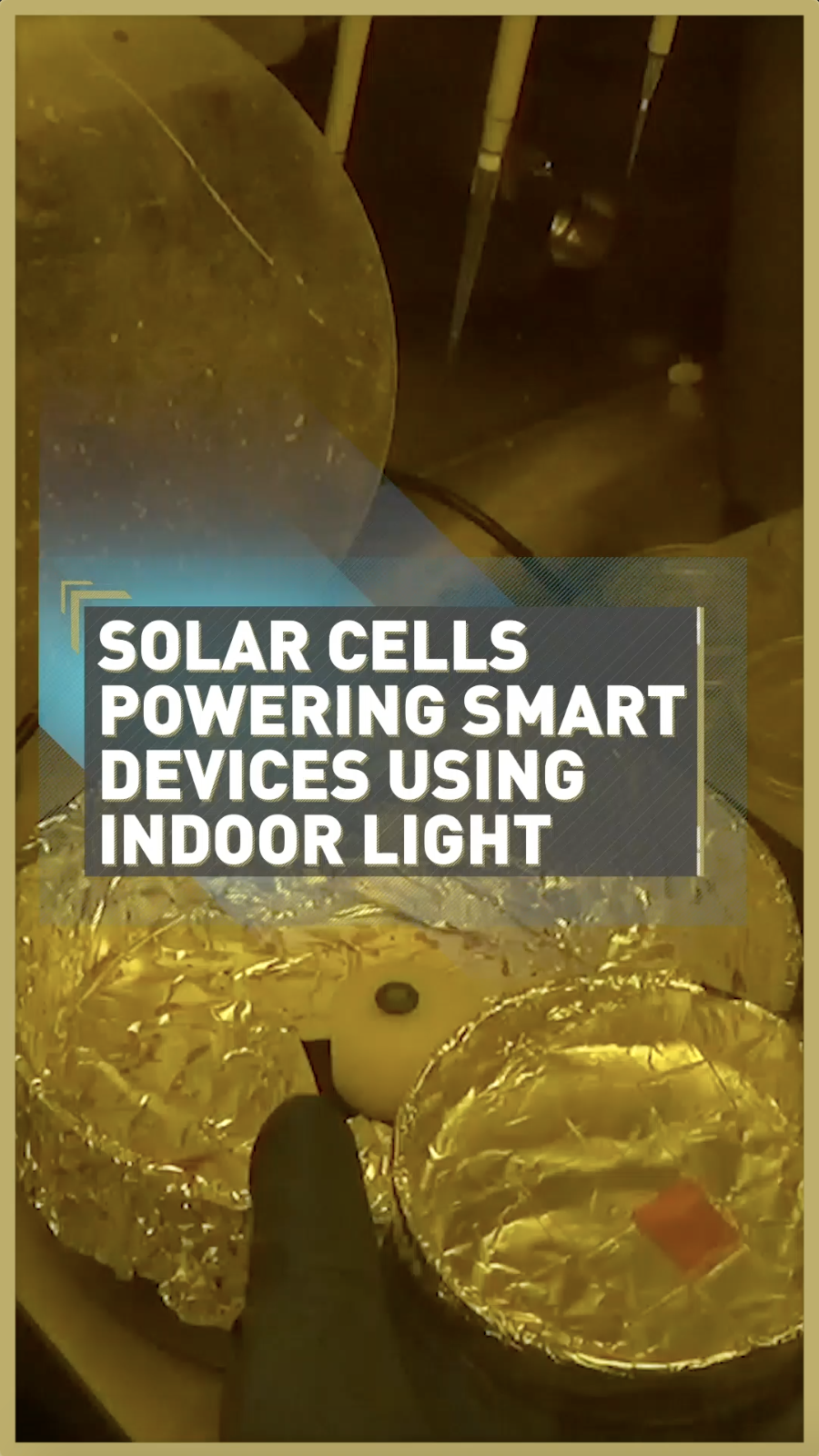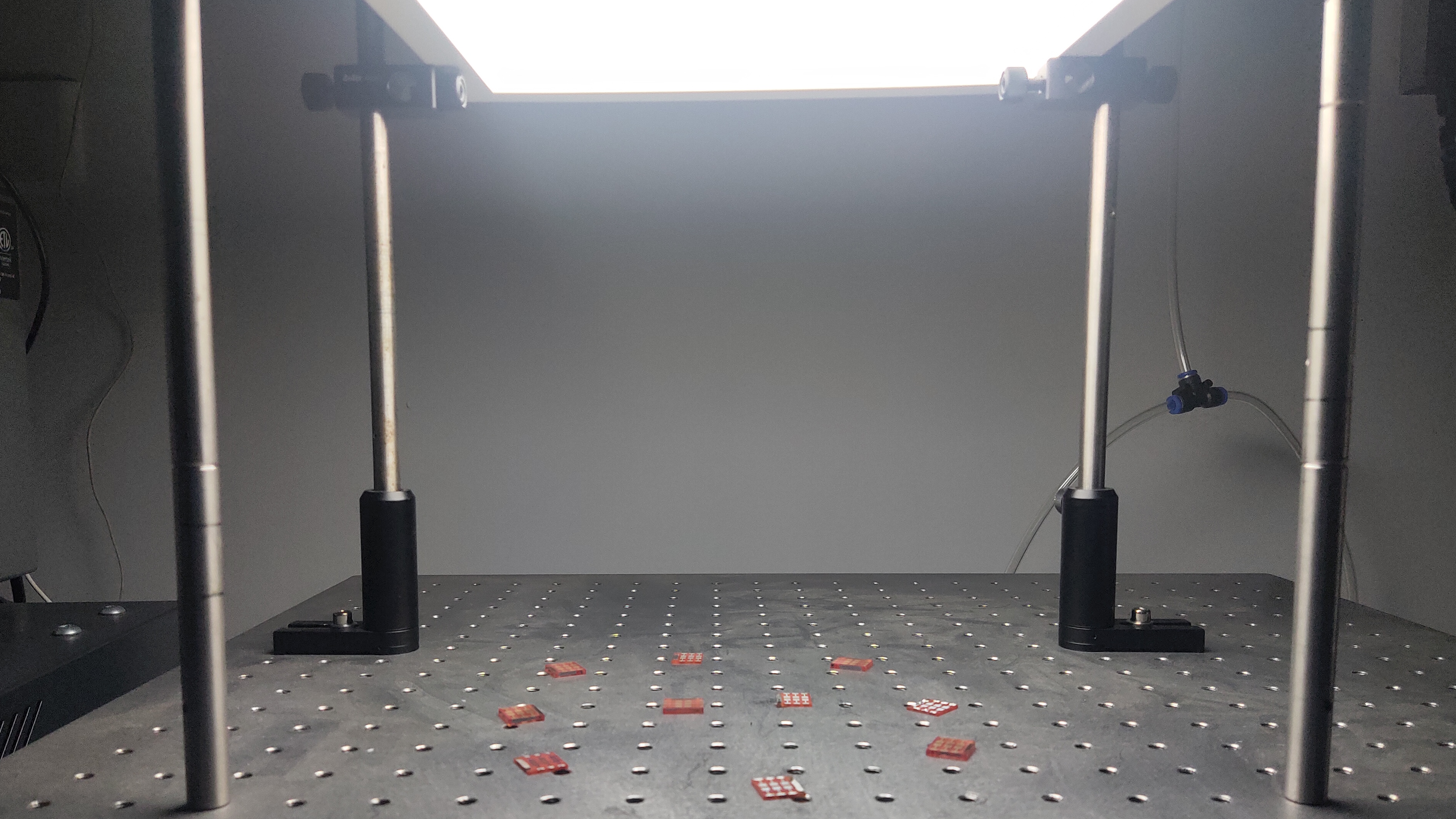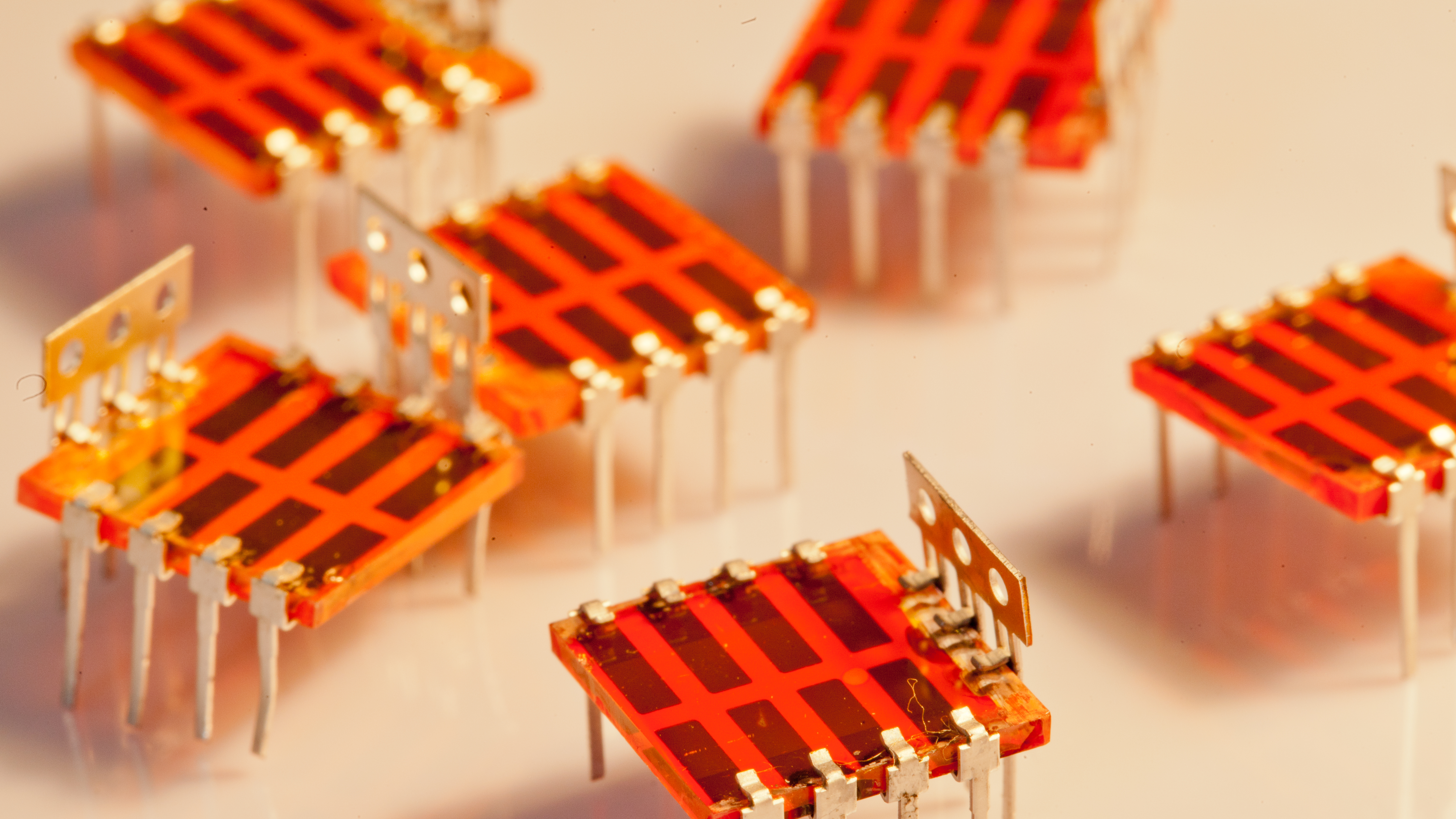03:37

When we think of solar panels, we associate them with harvesting energy from sunlight to generate power or electricity.
But scientists have now developed new materials for solar cells that can take energy from lightbulbs found inside our homes and offices and use it to power everyday smart devices.
Smart devices, such as smart speakers, gadgets and wearable health and wellness sensors are becoming more and more common inside homes.
So the researchers, who reported their findings in the Advanced Energy Materials journal, have been working on better, greener, ways to power these devices than conventional batteries that are often bad for the environment, contain toxic chemicals and are not long-lasting.
"So the idea with an indoor solar cell is that you make them, they can last for the entire lifetime of the device itself, and so long as there's some ambient lighting available, then it can convert that energy to power the device, so you don't have to keep on replacing the power source," Robert Hoye, from Imperial College London, and co-author of the study, told CGTN Europe.

Green, efficient and low-cost
The team of researchers from the UK's Imperial College London and University of Cambridge, and from China's Soochow University, were investigating materials being developed for next-generation solar cells, when they made their discovery.
"So the materials we've developed belong to a class known as lead-free perovskite-inspired materials – it's a long name that means that they relate in many ways to materials called perovskites which have received a tremendous amount of attention in the research arena for next-generation solar cells," Vincenzo Pecunia from Soochow University and co-author of the study, told CGTN Europe.
"Crucially, these [perovskite] materials are much easier to make than conventional solar cell materials. And this is, of course, attractive because it could potentially lead to very cheap photovoltaics and solar cells," he added.
But the problem with perovskites that were being widely used, was that they contained toxic lead substances, which led the researchers to investigate "perovskite-inspired materials" to circumvent this problem, using safer elements like bismuth and antimony instead.
"It turns out, however, that these lead-free materials cannot absorb sunlight so well and this has in fact prevented them from progressing significantly as solar cell materials," Pecunia explained.
"However, our discovery is that these materials are so much more efficient at absorbing visible light and converting it into electricity," he added.
The materials' efficiency in harvesting indoor light meant they could be a more sustainable alternative to power devices inside buildings than conventional batteries.

The new perovskite-inspired materials based on elements like antimony, were tested by scientists under indoor light and proved efficient in harvesting energy from the light and turning it into electricity. /Pecunia Lab
The new perovskite-inspired materials based on elements like antimony, were tested by scientists under indoor light and proved efficient in harvesting energy from the light and turning it into electricity. /Pecunia Lab
Indoor vs outdoor solar cells
Absorbing light and converting it into energy is called the photovoltaic effect, which has long been used in solar panels as way of generating electricity from sunlight.
According to materials science expert, Robert Hoye indoor and outdoor cells work in the same way using the effect, but the key difference is in the materials they use.
Solar cells on rooftops are mostly made from crystalline silicon, which absorbs mostly infrared light, making it efficient outdoors under sunlight.
"So what's different about these new materials we've been looking at, is that they absorb in a different part of the light spectrum and they absorb visible light rather than infrared light. So if you were to use them outdoors to try to absorb sunlight, they don't work as well as silicon," Hoye explained.
"But because the lighting spectrum is very different indoors, they work much more efficiently indoors and their efficiency potential is much higher than crystalline silicon solar cells," he added.
The materials studied by the researchers go by the technical names of bismuth oxyiodide (BiOI) and the defect‐ordered perovskite cesium antimony chloride‐iodide (Cs3Sb2ClxI9‐x).
By conducting further tests using these new materials under indoor light in their laboratories, the researchers showed that the power provided by these materials under indoor illumination is already sufficient to operate electronic circuits.
"What we've done is we also calculated the future efficiency potential for these new materials, and we've shown that potentially in the future they could reach efficiencies within the 40 to 60 percent range, and that's significantly higher than what has been demonstrated with silicon," Hoye said.

The researchers say there is further potential to improve the efficiency of these solar cells, which use elements including bismuth oxyiodide, and enlarging them to power larger smarter devices. /Robert Hoye/Imperial College London
The researchers say there is further potential to improve the efficiency of these solar cells, which use elements including bismuth oxyiodide, and enlarging them to power larger smarter devices. /Robert Hoye/Imperial College London
The future is bright
While the researchers explained that their new material solar cells have shown efficiency and great promise, they have also identified several possible improvements that could accommodate the development of future smart devices.
One is increasing the size of the lab scale devices to a "centimeter-squared scale," that could power bigger electronics.
"You have Bluetooth emitters or Wi-Fi devices and those need a bit more power, so to power, you need to have a larger solar cell," explained Hoye.
They are also working on better integration of the solar cells into smart devices. "So rather than having a standalone solar cell and a standalone electronic device to integrate them together into one device, and that will be the ultimate step," Hoye said.
The scientists say these materials could potentially be processed onto unconventional substrates like plastics and fabric which aren't compatible with conventional technologies, opening up a host of new possibilities for their application.
"So think for instance, devices that are going to be used to enhance our quality of life in the form of smart skin patches for health and wellness monitoring, as well as devices that are going to be used for smart homes in which we could wirelessly interact with all types of sensors and appliances for greater comfort and safety," explained optoelectronics expert Vincenzo Pecunia.

